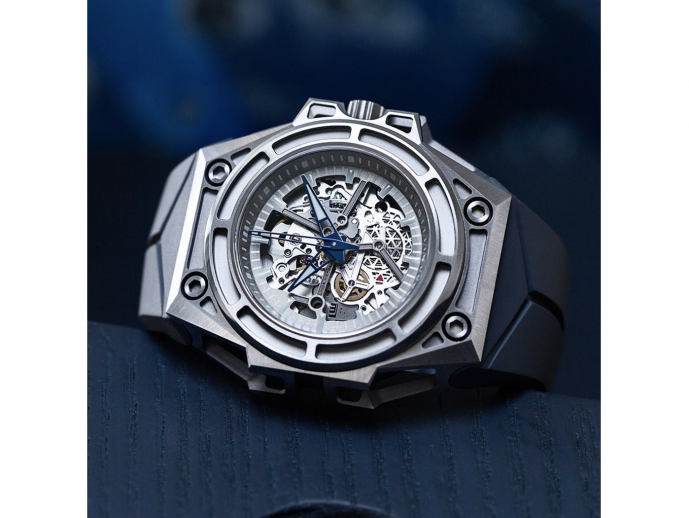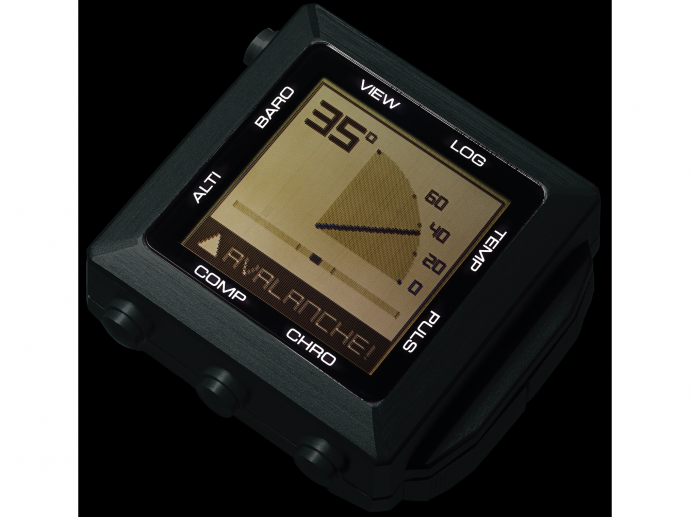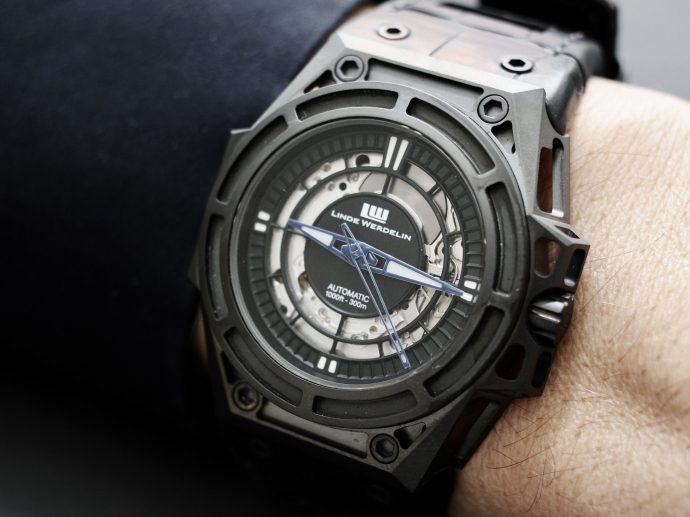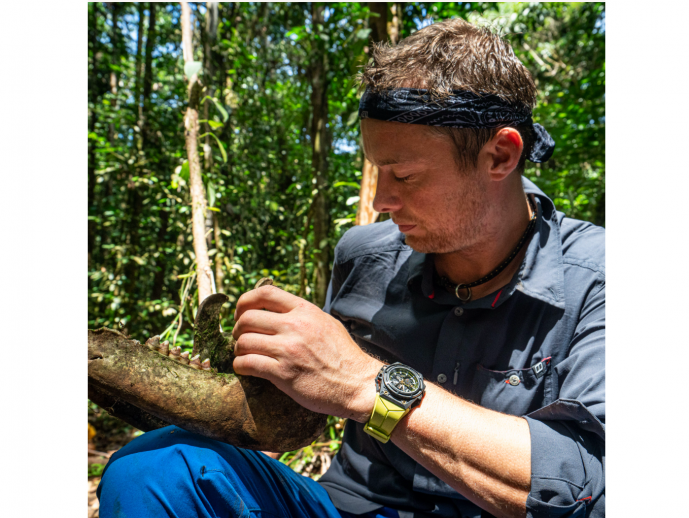Categories more
- Adventures (17)
- Arts / Collectables (15)
- Automotive (37)
- Aviation (11)
- Bath, Body, & Health (77)
- Children (6)
- Cigars / Spirits (32)
- Cuisine (16)
- Design/Architecture (22)
- Electronics (13)
- Entertainment (4)
- Event Planning (5)
- Fashion (46)
- Finance (9)
- Gifts / Misc (6)
- Home Decor (45)
- Jewelry (41)
- Pets (3)
- Philanthropy (1)
- Real Estate (16)
- Services (23)
- Sports / Golf (14)
- Vacation / Travel (60)
- Watches / Pens (15)
- Wines / Vines (24)
- Yachting / Boating (17)
Published
03/18/2023Originally our watches were called the Biformeter Elemental and the Biformeter Two Timer and were made in either steel or 18kt gold cases with an ETA 2892 (3 hand only) or an ETA 2893 (3 hand with second time zone hand) movement inside. Each watch had an attachable digital computer called the Land Instrument.
In 2007, at the time we had launched more publicly and were showing our pieces in Geneva to potential retailers and journalists, we decided to support Conrad Anker and Leo Houlding in their quest for tracing George Mallory’s and Andrew Irvine’s footsteps up Mount Everest in June 1924. They had disappeared during their last ascent to reach the summit and it had never been confirmed whether it was indeed possible to climb the north side unaided by the “Chinese ladder”. Conrad and Leo set out to change that.
It was very exciting that members of the expedition were wearing our Biformeter watches with the attachable Land Instrument for measuring height, temperature, inclination, heart rate, etc. and we followed the expedition’s progress closely that June in 2007. When the team had successfully summited and returned to London we met with them to hear about their experiences in general and in particular with regards to our watches and instruments.
To our immediate surprise and disappointment, they had decided to leave the watches at base camp at 5,500 metres and only bring the instruments to the top because of weight limitations. Obviously, this was not what our idea was about.
Leo at that meeting suggested that we should make a lighter watch of which titanium would be an obvious solution. Morten (Linde) took this advice away with him but decided we had to do more than just use a lighter material.
Thereof came the idea of skeletonising the case - inspired by formula 1 cars where every gram is important for performance - something highly relevant to mountaineering. Weight reduction and performance goes hand in hand with mountain equipment.
In our workshop, in Denmark we started removing material from the Biformeter steel cases and quite a few watches never became watches again. In hindsight maybe not the most economical way of doing it but such is creation and innovation. The resultant pieces were launched with 20 pieces on an online platform then called 20ltd.com. We decided to name them Trigon after the triangular shape. We have never seen any of the 20 pieces re-sold - they live in the watchverse.
The Trigon was more like an in-between model to what became the SpidoLite in March 2009 after 20 months of development. We decided on the rather more memorable name of SpidoLite - illustrative of the strength, lightness and elegance of a spider’s web. Trigon now refers to the pattern used in our LW06 chronograph movement (and on skis we made back in 2015).
We intended to launch two series of the new family SpidoLite in titanium grade 2 and in titanium grade 2 dlc with ETA 2892 movements. Then right in the middle of production we got the idea to contact famed Danish master watchmaker Svend Andersen and ask him to modify a movement for us. Svend luckily decided to work with us and the SpidoLite SA was born. This was our first foray into a different type of movement - and a different price level. Priced at Sfr 9,000 all 44 pieces sold out immediately.
The immediate interest in the SpidoLite gave us the impetus to divide our Biformeter family into the SpidoLite family for mountaineering and the Oktopus family for the sea and let both be inspired aesthetically and construction wise by those two universes.
Construction challenges with the first SpidoLite cases led us to reconstructing the case design with an inner case and an outer case that subsequently became the SpidoLite II which we are still making with the classic models as well as the 3D movement series. It also got us working with Valerian Jacquet of Concepto to develop movements with strengthened escapements and ceramic bearings to facilitate extreme mountain pursuits.
For the 3D movements we went further in our customisation and weight reduction. It is an optimisation as weight reduction cannot not be at the expense of strength and accuracy - much like the technical challenges with the SpidoLite cases. The most poignant example here would be the SpidoLite in 3DTP carbon which is the lightest SpidoLite at 62 grams and with a movement completely designed and built by Jean-François Mojon of Chronode and us.
In 2019 we were asked by Leo Houlding and team to support an expedition to climb the super vertical mountain Mount Roraima in Guyana, South America. This expedition includes a plus 100km long trek through dense jungle and then a six days climb up the super vertical side sleeping in hanging tents on the way up. Since documented in the film “House of the Gods”. For the expedition we made a special SpidoLite 3DTP with extra Super Luminova for Leo Houlding.
For the last year we have been working on generation 3 of the SpidoLite family (hence why we haven’t launched a new series of SpidoLite for a while). There will be subtle differences, as you have come to expect from us.
The SpidoLite is really the essence of Linde Werdelin - I have on several occasions been asked if we could only make 1 watch which would it be - and it would be the SpidoLite 3D in titanium - mainly because it is direct descendent of the original Biformeter watch launched in 2006.



















